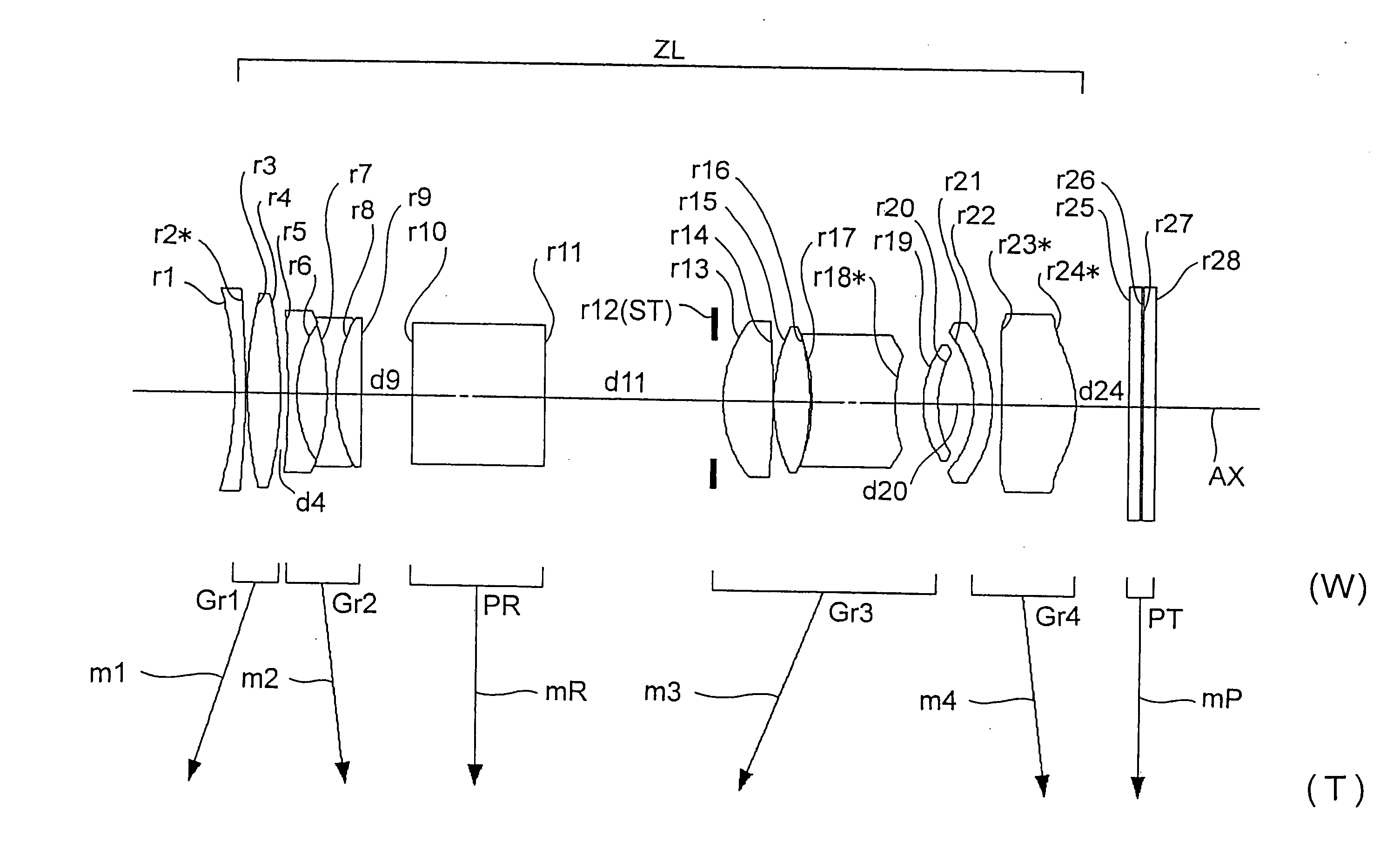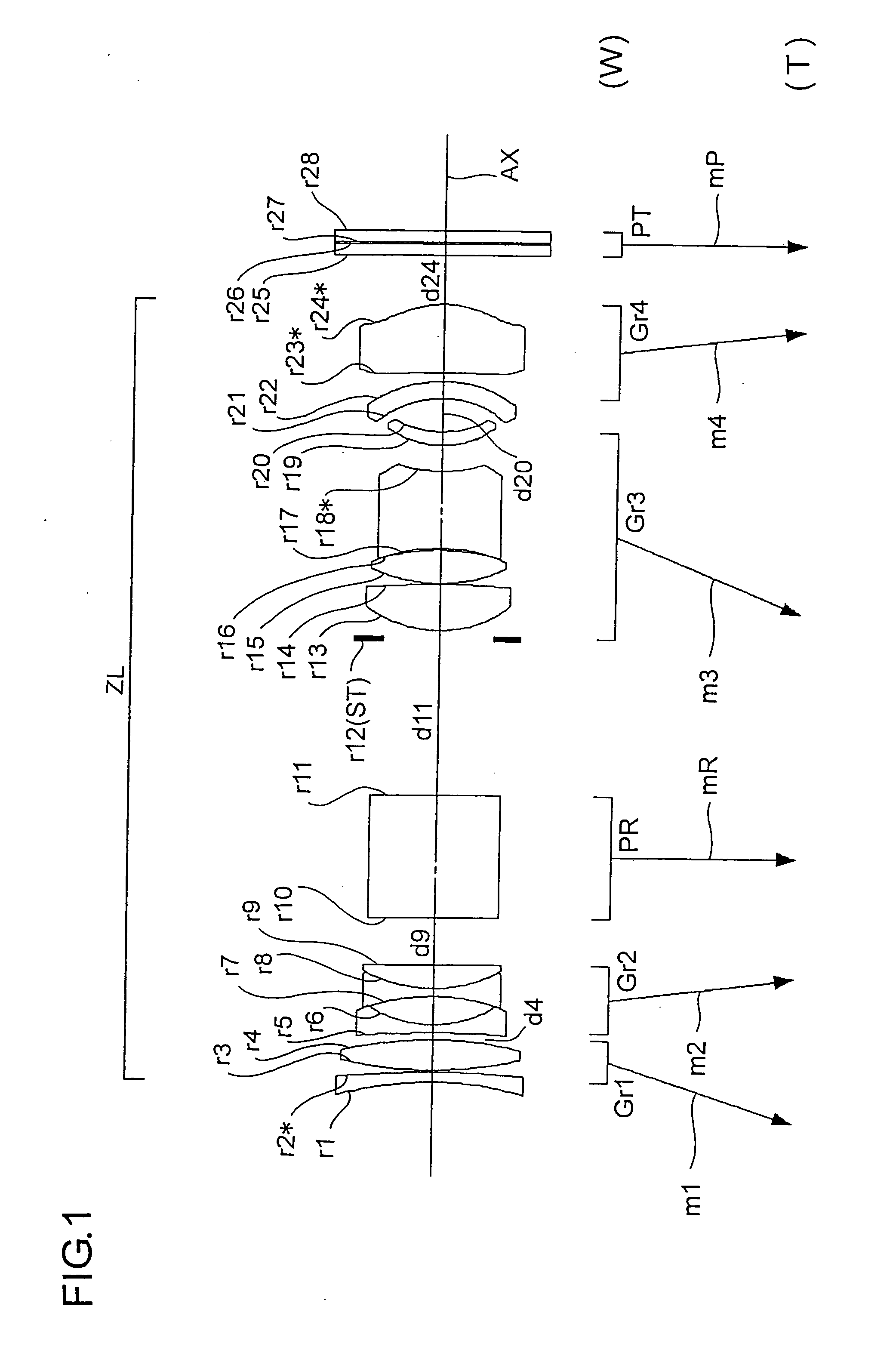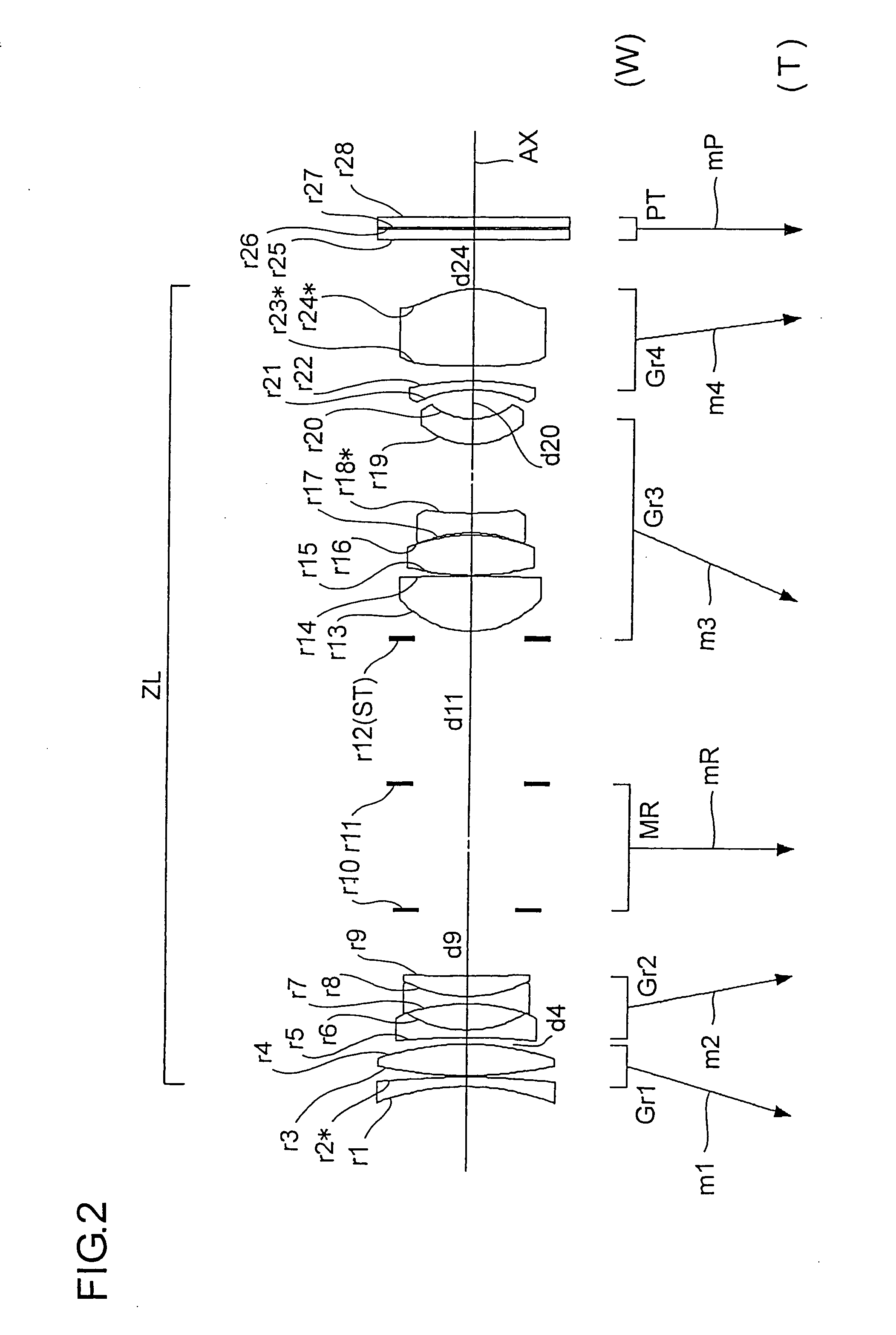Variable magnification optical system
a magnification optical system and variable magnification technology, applied in the field of variable magnification optical systems, can solve the problems of difficult to ensure optical performance to meet such high-standard specifications, difficult to use conventional zoom lens systems, and large image-taking lens systems, etc., to achieve high magnification variation ratio, high performance, and compact size
- Summary
- Abstract
- Description
- Claims
- Application Information
AI Technical Summary
Benefits of technology
Problems solved by technology
Method used
Image
Examples
examples
[0142] Hereinafter, practical examples of the zoom lens system embodying the present invention will be presented with reference to their construction data and other data. Examples 1 to 5 presented below are numerical examples corresponding respectively to the first to fifth embodiments described above. Thus, the optical construction diagrams (FIGS. 1 to 5) showing the first to fifth embodiments also show the lens constructions of Examples 1 to 5, respectively.
[0143] Tables 1 to 10 show the construction data of Examples 1 to 5. Table 11 shows the values for the conditional formulae, etc., as actually observed in each example. In the basic optical construction shown in Tables 1, 3, 5, 7, and 9 (where i represents the surface number), ri (i=1, 2, 3, . . . ) represents the radius of curvature (in mm) of the i-th surface counted from the object side; di (i=1, 2, 3, . . . ) represents the axial distance (in mm) between the i-th and (i+1)th surfaces counted from the object side; Ni (i=1, ...
PUM
 Login to View More
Login to View More Abstract
Description
Claims
Application Information
 Login to View More
Login to View More - R&D
- Intellectual Property
- Life Sciences
- Materials
- Tech Scout
- Unparalleled Data Quality
- Higher Quality Content
- 60% Fewer Hallucinations
Browse by: Latest US Patents, China's latest patents, Technical Efficacy Thesaurus, Application Domain, Technology Topic, Popular Technical Reports.
© 2025 PatSnap. All rights reserved.Legal|Privacy policy|Modern Slavery Act Transparency Statement|Sitemap|About US| Contact US: help@patsnap.com



